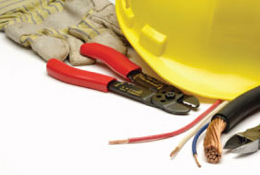If the forced-air system in your home is equipped with inexpensive fiberglass filters, you should upgrade them to high-efficiency media filters. Standard room air conditioners usually do a pretty good job of filtering pollen, ragweed and spores if you keep the coils on the unit clean and replace the filters as frequently as indicated by the manufacturer.
Adding an air cleaner. If cleaning, ventilation and routine filter maintenance on existing systems don’t provide relief, consider an air cleaner. There are three types: media, electrostatic and hybrids. Media filters use physical barriers (media) and coatings to trap particles. The finer the media and the greater the surface area, the better it is at trapping small particles. Electrostatic filters use charged plates that create an electrical field to trap particles. Hybrid filters use a combination of these technologies. Ion generators are in a category of their own and should be avoided.
Filter facts. Although a new federal system for testing the efficiency of air filters will be finalized sometime this autumn, many manufacturers are already using it. These Minimum Efficiency Reporting Values (MERV) test how well filters remove small particles from the air; the higher the MERV number, the more efficient the filter. “This rating is really useful for comparing medium- and high-efficiency filters,” says H.E. Barney Burroughs, chairman of the American Society of Heating, Refrigeration and Air Conditioning Engineers committee on the new standard. “The rating tells people what the difference is between filters, and takes away a lot of the smoke and mirrors of the manufacturer’s claims.”
Most of these more efficient filters can be used on any forced-air system, but may require some retrofitting. Have your heating and cooling contractor make sure the new filter won’t reduce airflow to a dangerous level. You won’t be as comfortable, and you could overtax the system. This potential airflow reduction, called pressure drop, should be considered when the filter is new (initial pressure drop) and when it’s full (final pressure drop).
It’s uncomfortable and even dangerous to live in a house where the air either makes you sick or aggravates allergies and asthma. But with a few simple steps you may be able to cut down on the irritants in your home—and breathe a sigh of relief










